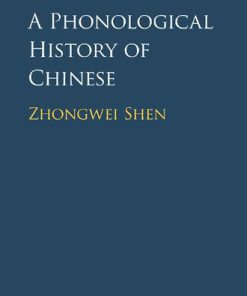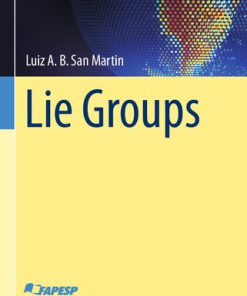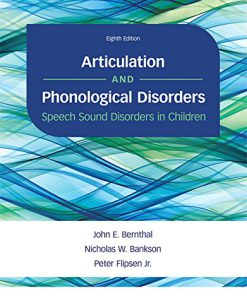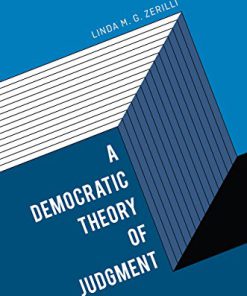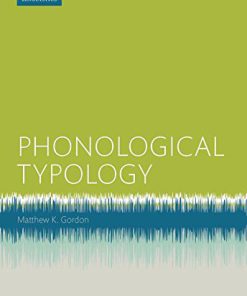A Theory of Phonological Features 1st Edition San Duanmu ISBN 0191642843 9780191642845
$50.00 Original price was: $50.00.$25.00Current price is: $25.00.
A Theory of Phonological Features 1st Edition by San Duanmu – Ebook PDF Instant Download/Delivery: 0191642843, 9780191642845
Full download A Theory of Phonological Features 1st Edition after payment

Product details:
ISBN 10: 0191642843
ISBN 13: 9780191642845
Author: San Duanmu
This book outlines a system of phonological features that is minimally sufficient to distinguish all consonants and vowels in the languages of the world. The extensive evidence is drawn from datasets with a combined total of about 1000 sound inventories. The interpretation of phonetic transcriptions from different languages is a long-standing problem. In this book, San Duanmu proposes a solution that relies on the notion of contrast: X and Y are different sounds if and only if they contrast in some language. He focuses on a simple procedure to interpret empirical data: for each phonetic dimension, all inventories are searched in order to determine the maximal number of contrasts required. In addition, every unusual feature or extra degree of contrast is re-examined to confirm its validity. The resulting feature system is surprisingly simple: fewer features are needed than previously proposed, and for each feature, a two-way contrast is sufficient. Nevertheless, the proposal is reliable in that the notion of contrast is uncontroversial, the procedure is explicit, and the result is repeatable. The book also offers discussion of non-contrastive differences between languages, sound classes, and complex sounds such as affricates, consonant-glide units, consonant-liquid units, contour tones, pre-nasalized stops, clicks, ejectives, and implosives.
A Theory of Phonological Features 1st Table of contents:
1: Introduction
1.1 Sounds and time
1.1.1 Segmentation of speech
1.1.2 Granularity of segmentation
1.1.3 Defining sounds by time
1.1.4 Phonemes and allophones
1.2 Features and contrast
1.2.1 Contrast
1.2.2 Sound classes
1.2.3 Phonetic properties
1.2.4 Summary
1.3 Cross-language comparison
1.4 Adequacy of available data
1.5 Summary
2: Method
2.1 Data
2.2 Guiding principles
2.2.1 Principle of Contrast
2.2.2 Maxima First
2.2.3 Known Feature First
2.2.4 Summary
2.3 Interpreting transcription errors
2.4 Searching for maxima
2.5 Interpreting exceptions
2.6 Summary
3: Vowel contrasts
3.1 Vowels in UPSID
3.1.1 Basic vowels
3.1.2 Extra-short (overshort) vowels
3.1.3 Pharyngeal vowels
3.1.4 Other vowels
3.2 Vowels in P-base
3.2.1 Basic vowels
3.2.2 Pharyngeal vowels
3.2.3 Creaky vs. glottalized vowels
3.2.4 Voiceless vowels
3.2.5 Extra-short and extra-long vowels
3.2.6 Other vowels
3.3 Summary
4: Vowel height
4.1 Motivations for a two-height system
4.2 Basic vowels in UPSID
4.3 Basic vowels in P-base
4.4 Evidence from sound classes
4.4.1 [tense] in English
4.4.2 [+low] in P-base
4.5 Step raising
4.6 Summary
5: Consonant contrasts
5.1 Consonants in UPSID
5.1.1 Voiced glottal stop and pharyngeal stop
5.1.2 Dental, dental/alveolar, and alveolar places
5.1.3 Sibilant vs. non-sibilant fricatives
5.1.4 Taps and flaps
5.1.5 Lateral fricatives vs. lateral approximants
5.1.6 “r-sound´´ and “approximant [r]´´
5.1.7 Summary
5.2 Consonants in P-base
5.2.1 Basic consonants
5.2.2 Consonants with a “voiceless´´ diacritic
5.2.3 Other consonants
5.3 Summary
6: A feature system
6.1 Previous proposals
6.1.1 Jakobson etal. (1952)
6.1.2 Chomsky and Halle (1968)
6.1.3 Clements (1985)
6.1.4 Clements and Hume (1995)
6.1.5 Browman and Goldstein (1989)
6.1.6 Halle (1995; 2003)
6.1.7 Ladefoged (2007)
6.1.8 Summary
6.2 A new feature system
6.2.1 Articulators and gestures
6.2.2 Interpreting manner features
6.2.3 Interpreting place features
6.2.4 Other features
6.3 Representing vowels
6.4 Representing basic consonants
6.5 Representing tones
6.6 Feature specification (underspecification)
6.7 Phonetic variation of features
6.8 Summary
7: Complex sounds
7.1 Compatibility of feature values: The No Contour Principle
7.2 Complex sounds whose features are compatible
7.2.1 Affricates
7.2.2 CG (consonant-glide) units
7.2.3 CL (consonant-liquid) units
7.3 Complex sounds whose features are incompatible
7.3.1 Contour tones
7.3.2 Pre- and post-nasalized consonants
7.4 Non-pulmonic sounds
7.4.1 Clicks
7.4.2 Ejectives
7.4.3 Implosives
7.4.4 Two-sound analysis
7.5 Summary
8: Concluding remarks
8.1 How many distinct sounds are there?
8.2 How many sounds does a language need?
8.3 Where do features come from?
People also search for A Theory of Phonological Features 1st:
Tags:
San Duanmu,Theory,Phonological Features
You may also like…
Computers - Programming
Travel - Travel - Cities of the World
San Francisco 1st Edition Lonely Planet ISBN 178701410X 9781787014107
Linguistics Society
A Phonological History of Chinese 1st Edition by Zhongwei Shen ISBN 1107135842 978-1107135840
Science (General)
Politics & Philosophy - Social Sciences
Politics & Philosophy - Social Sciences
dictionaries & phrasebooks
dictionaries & phrasebooks






